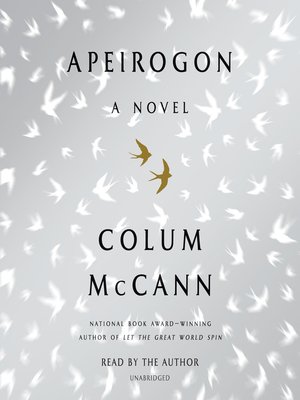

To give a small example, McCann turns to his homeland Ireland, and to the conflicted north of the island in particular, to draw parallels. Neither strand of the novel loses sight of the other. The personal is set in a larger political context. A great number of these fragmented sections are devoted to migratory birds, which seem to form part of the web that holds the global and yet local story together. The novel is structured like the Arabian Nights, counting 500 sections ascending in order and 500 descending-with a section entitled 1001 in the middle. Each time we return to them, new aspects are added, their stories and those of their families etched more and more clearly. In this way, the narrative never loses sight of the killings of Abir Aramin and Smadar Elhanan. In order to take in a tragedy, the mind keeps returning to the fact, with breaks, circling it, slowly grasping it over an expanse of time. The mind, when it has to take in an enormity, cannot constantly dwell on it. dropping of atomic bombs on Hiroshima and Nagasaki. And the use of deadly explosives is explored in many tangents, including the U.S. Rubber bullets were first used by the British State in Northern Ireland, killing children there. Human rights abuses form a pattern which includes the Middle East. This narrative style allows McCann to create a network of connections that spans the globe geographically and historically. Some of these tangents can be tenuous and fleeting, while others form the key aspects of the complex woven fabric that is this novel.

It seems to “jump” from one thought to the next, the new idea prompted by an aspect of the previous one. The novel’s structure is unusual, in some ways resembling the workings of the restless mind. Bassam Aramin and Rami Elhanan met through the organization Combatants for Peace, who state: “Our Ultimate Goal is to end the occupation and the establishment of a Palestinian state based on the 1967 borders two states living side by side in peace and cooperation or any other just solution agreed upon in negotiations.” McCann tells the true story of Palestinian Bassam Aramin and Israeli Rami Elhanan, and their daughters: Abir Aramin, age 10, killed by a rubber bullet in 2007 and Smadar Elhanan, age 13, killed by suicide bombers in 1997. And yet, at its core is the undisputed fact that the State of Israel is guilty of sustained human rights abuse against the people of Palestine. The title of McCann’s 2020 novel gives the reader an indication of the innumerable facets that form this novel.

Unlike a pentagon, an apeirogon has an infinite number of sides, or aspects. In the context of the recent escalation of violence in the Middle East and Ireland’s condemnation of Israel’s de-facto annexation policy, Apeirogon by Colum McCann is worth reading more than ever.


 0 kommentar(er)
0 kommentar(er)
